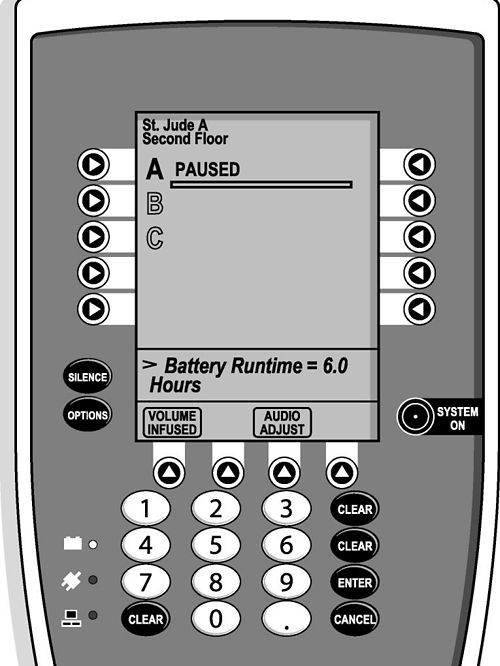During treatment, your child may spend many hours hooked to an IV (intravenous) pump. It is important for you to know what the pump is, how it is used, and some guidelines for its safe use.
What is an IV pump and how is it used?
An IV pump is used to give medicines to patients through one of the following:
- Central venous line
- Subcutaneous port
- PICC line
- Peripheral IV line
An IV pump is used when the patient must get a set amount of medicine at a certain rate of speed or time.
The IV pump is attached to a pole by a clamp on the back of the pump. The pumps used at St. Jude are known as “smart pumps.” They have built-in computer software that can help prevent errors in giving medicines.
Your child’s nurse will program the medicine name, dosage, and infusion rate. The pump will let the nurse know if there is a problem with the dose or infusion rate for that medicine. The pump also helps medicines infuse at a steady rate.
Plug the pump into a wall outlet when your child is in a patient room or the Infusion Center. But you can unplug the pump when your child leaves the room or goes to another part of the hospital for tests or procedures. The pump will run on its battery for long periods.
When the pump is unplugged, Battery Runtime flashes off and on in the bottom part of the screen. It will tell you how much time is left before you need to plug the pump back into a wall outlet.
When you are out of the room, check the screen often to make sure plenty of time remains on the battery. If your Battery Runtime gets low (1 hour or less), return to your child’s room or find an outlet to use where you are. The pump battery will recharge when plugged into a wall outlet.
When your pump makes a beep or alarm
Your pump may alarm or “beep” for a number of reasons. It will alarm if:
- A medicine is finished infusing
- The pump detects a blockage or air in the line
Always call your nurse if the pump sounds an alarm. Do not try to silence the alarm or fix the problem yourself. The nurses are trained to know what do for each alarm.
In areas where it is not possible to hook into a central call light system, a family member should remain with the patient when staff members are not in the room. When the pump starts to alarm, the family member should activate the call light to let the nurse know that the pump is alarming. Please do this as soon as your child’s pump starts to alarm, so the nurse can come quickly.
Do not try to adjust the volume of the pump alarm. If it is too loud, ask your nurse for help.
- Do not allow anyone except your care provider to touch the pump’s buttons. Tell a nurse if anyone has tampered with the pump.
- The screen on the front of the pump has a light that lets your child’s nurse see it clearly when room lights are low. Please do not cover the screen to block the light. The nurse must see the screen to be sure the IV infusion is correct. Do not hang sheets or blankets from the pole. Do not attach anything to the pump that would keep the nurse from having a clear view of the screen.
- Patients sometimes like to decorate their IV poles. Please do not let your child hang heavy items on the pole that could cause it to overturn. No heavy purses or backpacks on IV poles.
- Remind your child not to run with the IV pump or ride on the pole.
- When out of the room with the pump, your child should be with an adult at all times. Be careful when getting on and off the elevators.
If you have questions about IV pumps, please ask your child’s nurse.

